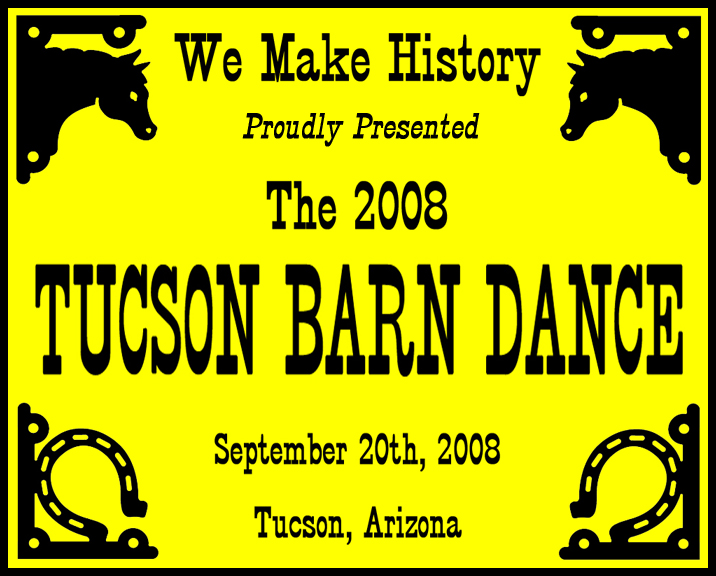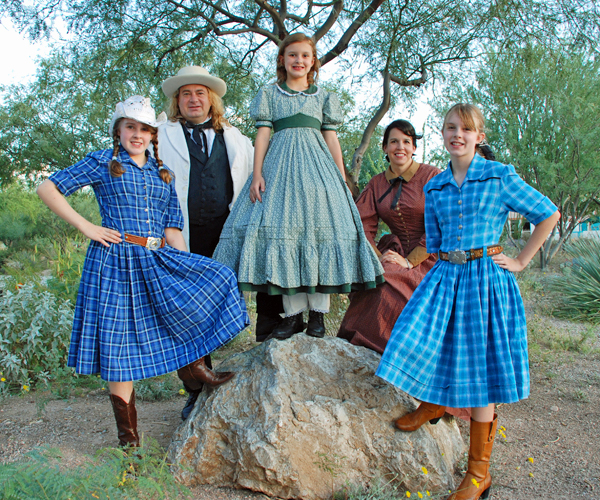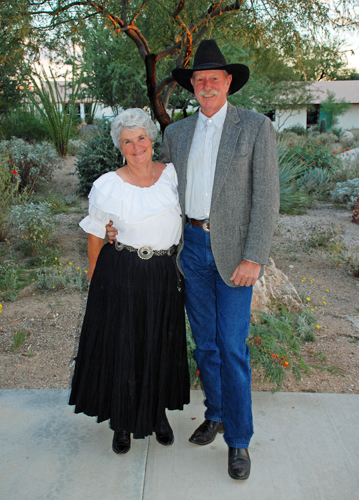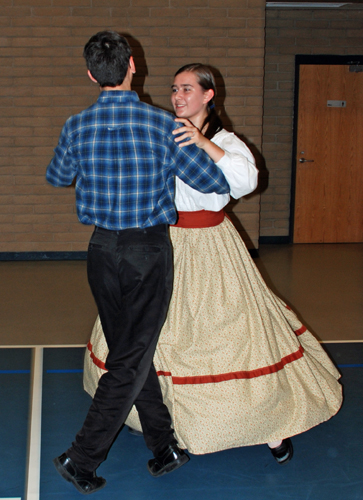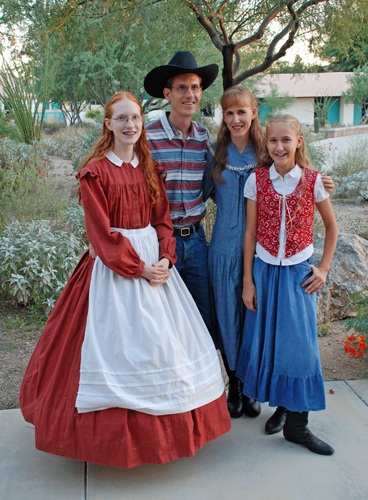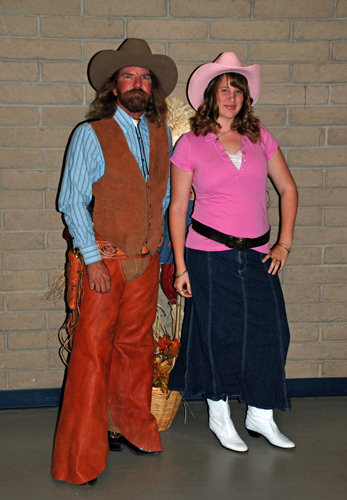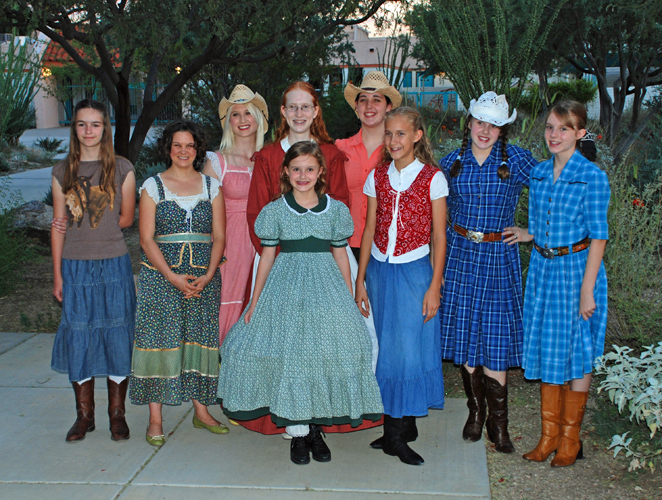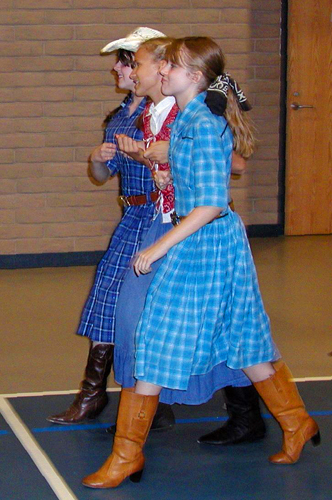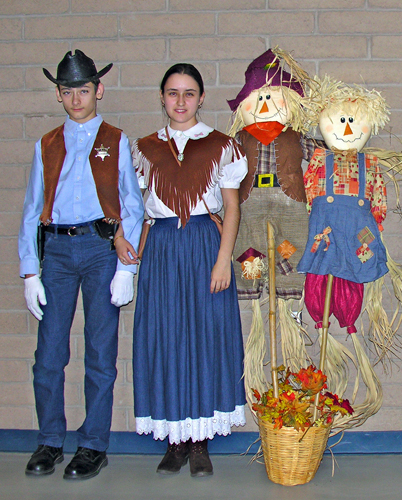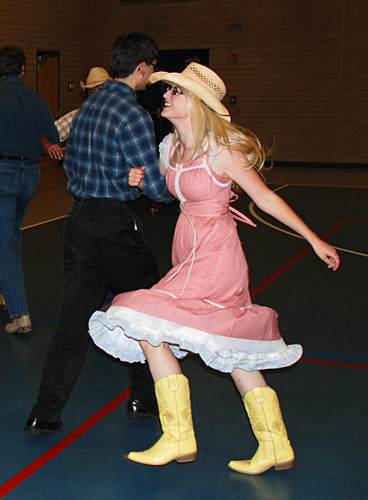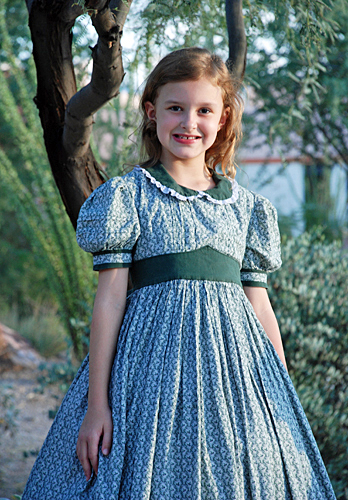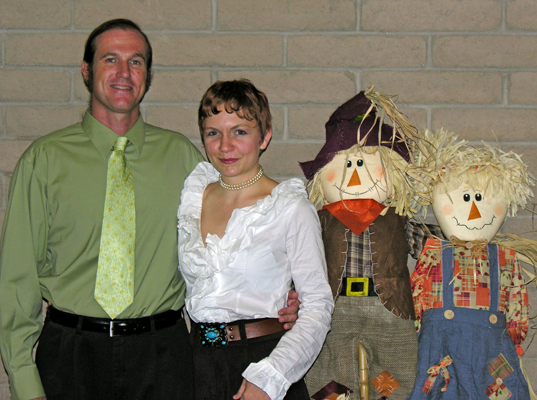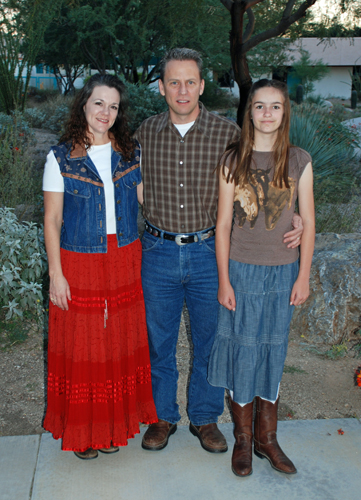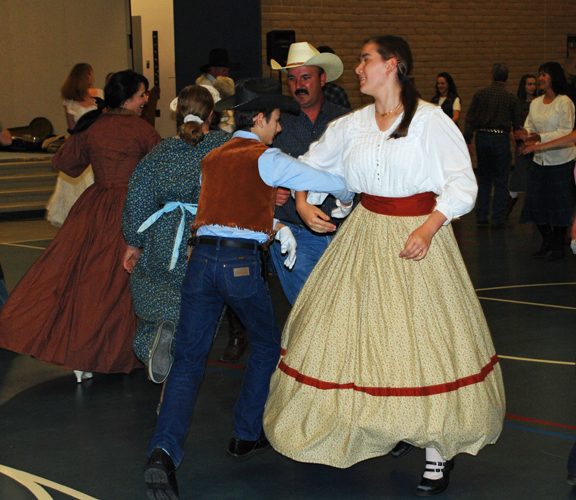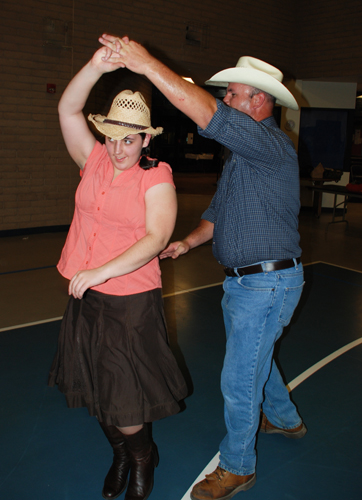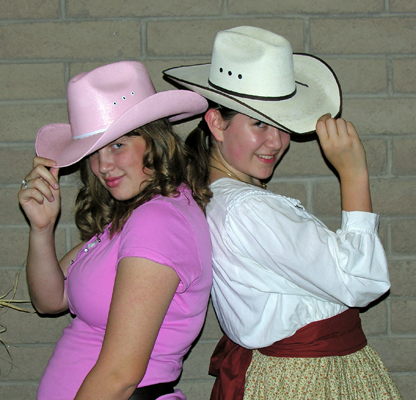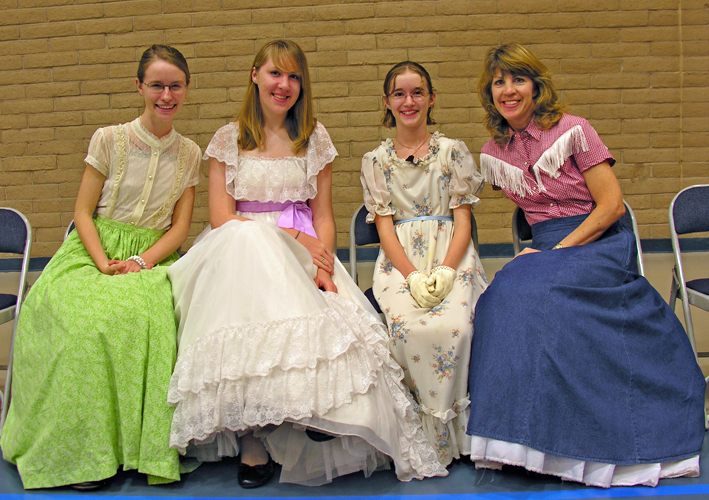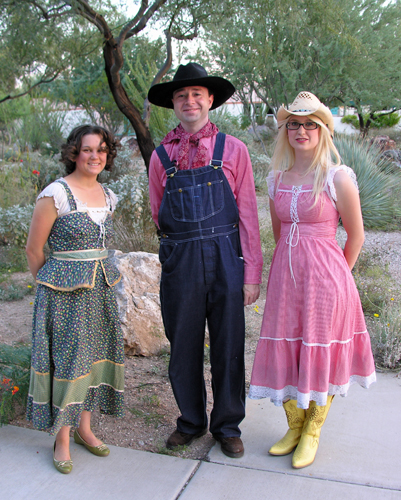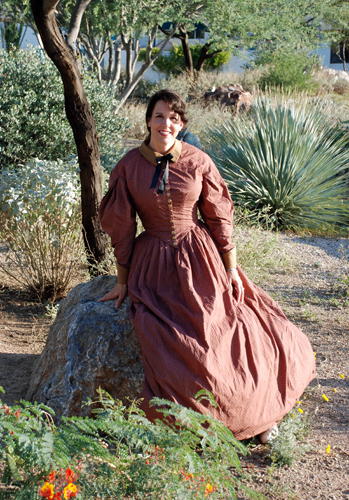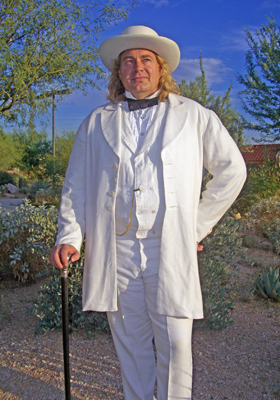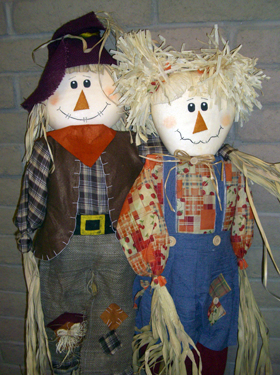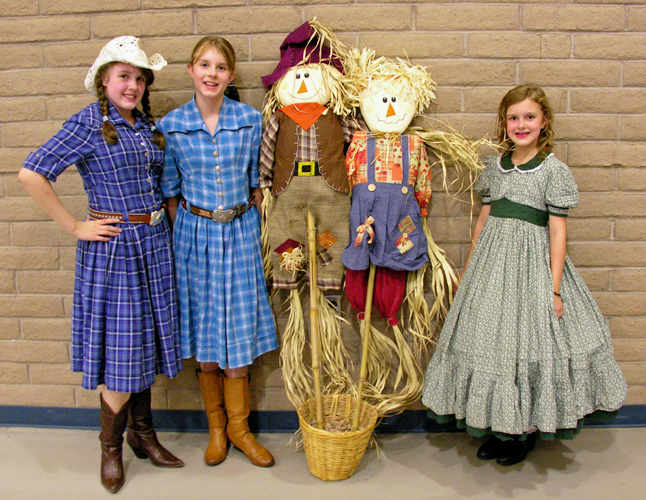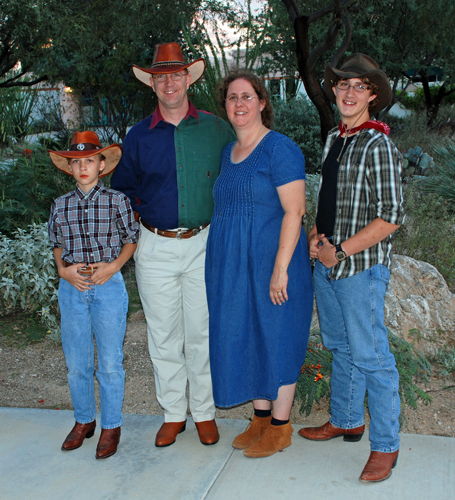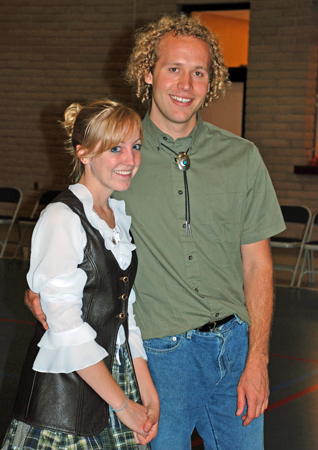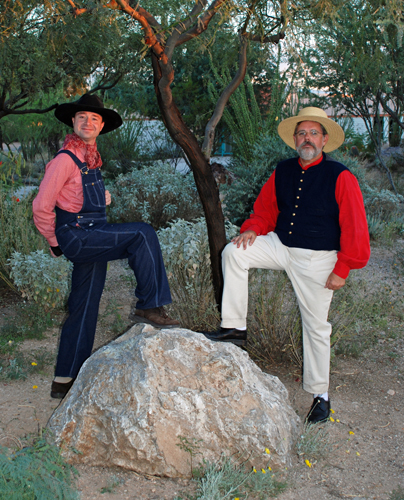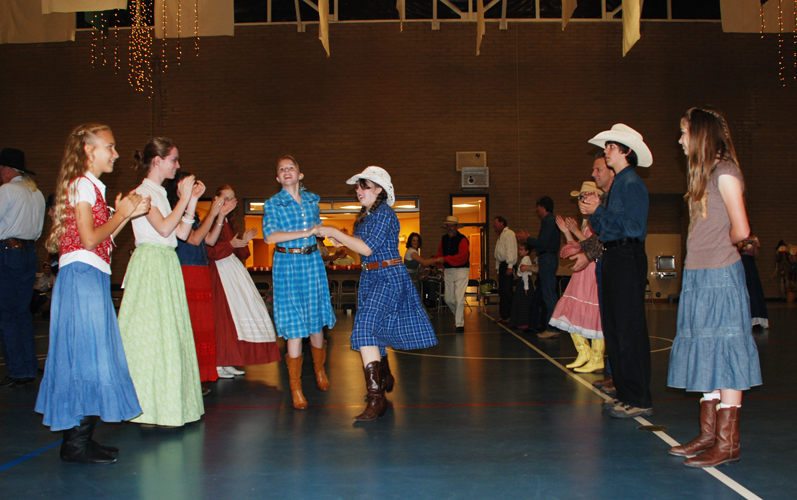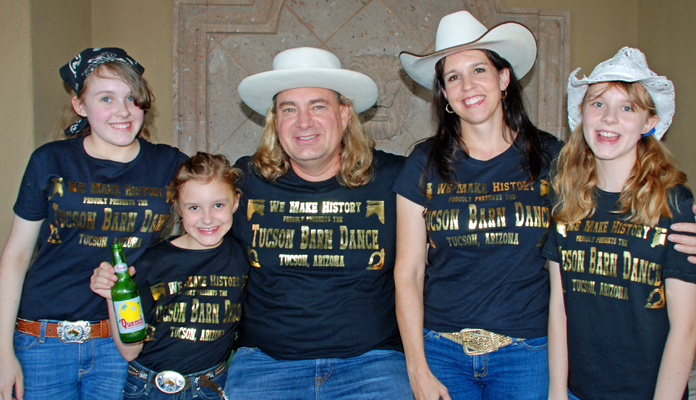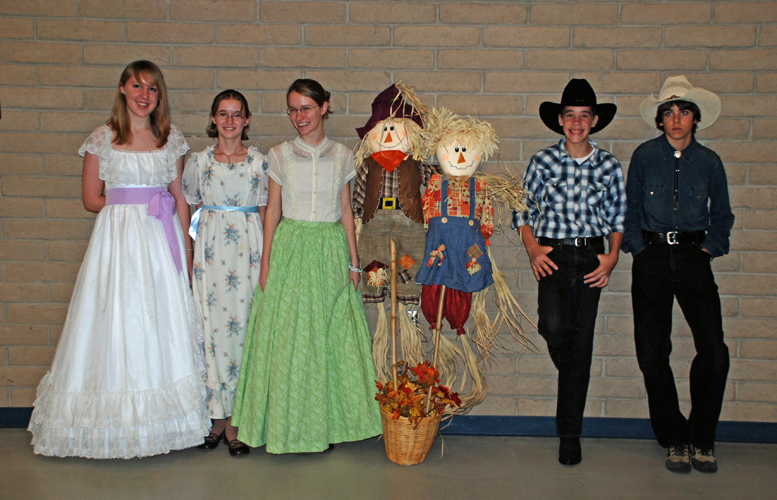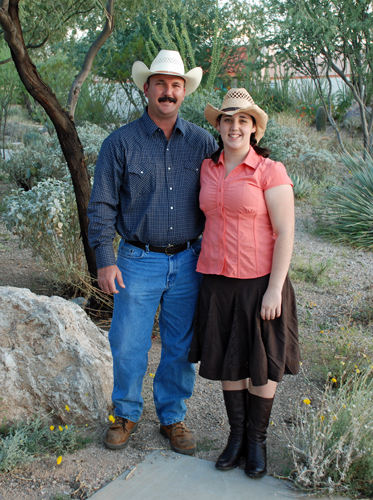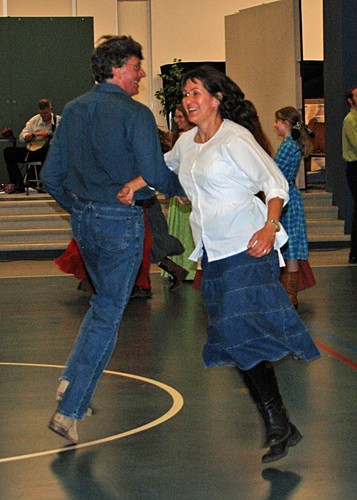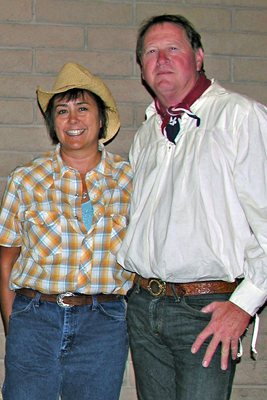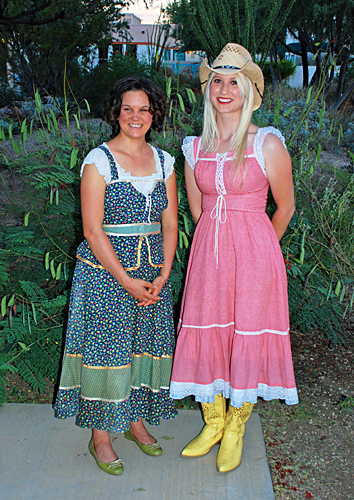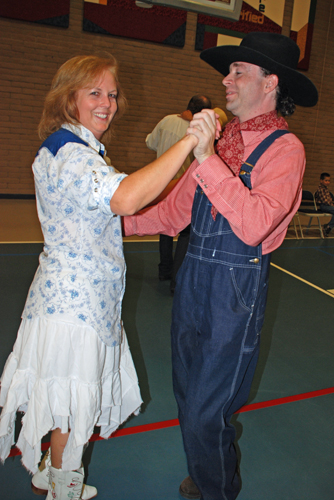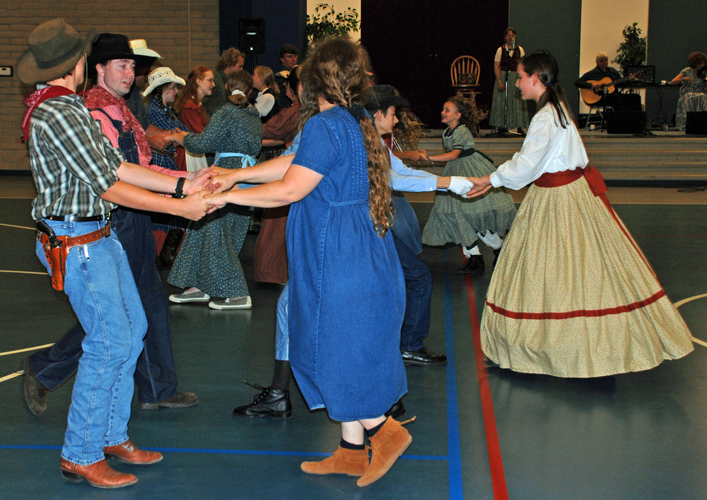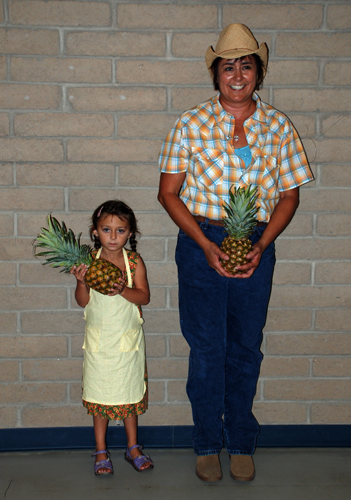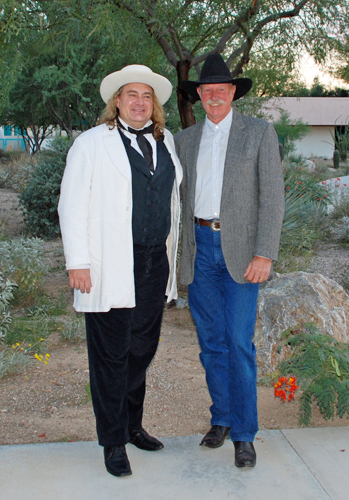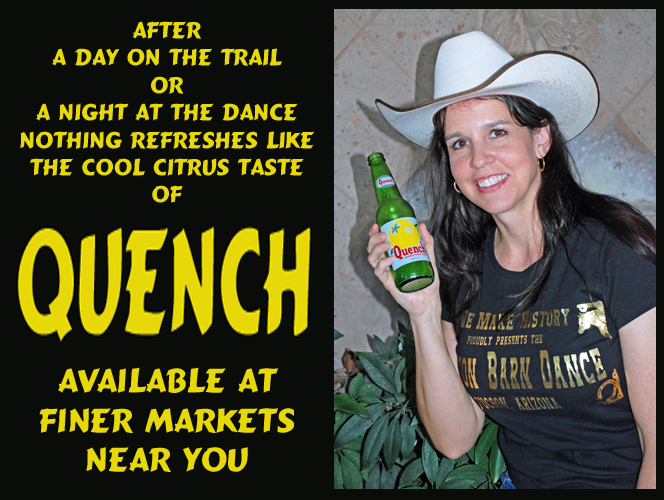The Friendly Family of We Make History
gathered and enjoyed our second annual celebration of America's Western &
Rural Heritage - The Tucson Barn Dance!
Seven Arizona Counties were represented as
folks from Tucson, Phoenix, Flagstaff, Prescott, Bisbee and Thatcher joined
with others from small towns and country seats in polishing boots, hitching
buggies and journeying to the pleasant Ironwood forests of Tanque Verde for
an evening of fiddling, fancy stepping and smiles as wide as a western
prairie!
Our ancestors would have understood our joy.
After all, there were few things that Americans of the
19th century liked better than dancing. Pioneers, soldiers, farmers,
politicians, ministers and indeed all sorts of people wrote in diaries,
letters and published articles regarding attending dances. Of course good
dancing is a very joyful experience. As our forbears realized, dancing
positively engages the mind, exercises the body and has a wonderful tonic
effect on the soul. But there was much more than just the pleasure of
dancing to attract participants. With no radio or CDs available, dances were
an opportunity to hear and enjoy music. With no telephones or email
available dances provided an opportunity to socialize, communicate and share
news with others. With high cultural expectations of behavior, dances were
especially an opportunity to polish one’s manners and develop the social
skills expected of those in "decent company".
While the formal “Grand Ball” may have been
the height of the 19th century dance experience, people from throughout the
social spectrum also enjoyed dancing in less elegant settings and less
ostentatious circumstances.
On prairies and plantations, in parlors and presidios, rural Americans of
all sections and classes enjoyed any opportunity to do some lively stepping.
From Atlantic to Pacific and The Great Lakes to the Gulf Coast, they reeled
and promenaded at soirees, shivarees, stomps, hoe-downs, corn-huskings,
fandangos, harvest balls, barn dances, county fairs, birthday parties,
wedding receptions, patriotic gatherings and church socials to tunes like
“Soldier’s Joy”, “Jefferson & Liberty”, “Bonaparte Crossing The Rhine”
or
"Cotton Eyed Joe".
Often no more than a single experienced fiddler was required but a good 3 or
4 piece string band could draw folks in from miles around. Some came on foot
or straddling the back of a mule while others pranced on racehorses, rolled
up in carriages or arrived perched in fashionable buggies. Some wore their
homespun “Sunday best” while others wore silken “store bought” goods. Some
came from busy, growing towns while others traveled from distant frontier
homesteads.
It may have been a New England Church Social,
an Appalachian Wedding, a Carolina Soiree, a Kentucky Hoe-Down, a Nebraska
Corn Huskin' Party, a Texas Fandango, a Prairie Harvest Dance or a Louisiana
Cajun' Stomp.
It might even have been a Tucson Barn Dance!
But wherever it was or whatever it might have
been called - one could be sure of warm smiles, friendly faces, a well-tuned
fiddle and some fine lively dancing!
Special Delivery: by Pony Express from The
Tucson Barn Dance
Howdy all.
Nice evenin' Ladies. How y'all doin'
Gents?
Well, I must say that things have been
mighty fine out here in The West.
This year's Tucson Barn Dance was
surely a happy occasion - a real hoot to use a local phrase.
Good, solid folks came from seven counties
spread out across the whole territory of Arizona. Not only Pima County
but also Cochise County, Graham County, Pinal County, Maricopa County,
Yavapai County and Coconino County were all represented in fine western
style.
From the ranches and farms of southern
Arizona they came, as well as city-slickers from Phoenix, miners down
from Prescott and lumberjacks from all the way up north in Flagstaff.
The fiddle was quick, the dancin' light
and lively and the smiles as wide as the western prairies.
"Swing that gal from Arkansas!" shouted
the dance mistress - and everyone did just that - even if the gal was
from some other place than Arkansas!
"Swing your Partner." "Now swing someone
else." "Swing someone from another set!" Now swing two or three!" "FREE
FOR ALL!" were the commands which climaxed our Arizona version of the
Virginia Reel.
Whew! That shor' were somethin' weren't
it?
I aint heard such a shoutin' an' ruckus
since Vicksburg back in '63!
Pistol Pete was dancin' with Mustang
Sally. Cochise was a swingin' Sacagawea. Buffalo Bill sashayed Annie
Oakley right on down the set. All in all 'twas a sight ta' behold, I
tell ya what.
After a few hours of shut-eye we went to
Sunday meetin' and then repaired to AJ's for some good BBQ - and of course
cool bottles of tasty QUENCH. "It's refreshing!"
Well, I'll close for now.
But do plan on takin' the overland stage
and joinin' us next year for the 2009 Tucson Barn Dance. Ya won't be
sorry ya did!
Vaya
con Dios.
Your friend & pard ...
Col. Scott
Please also see our “Etiquette
& Expectations” page as well as our "All
About Us" page.
www.WeMakeHistory.com
